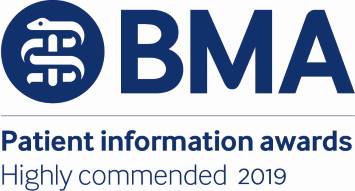Paruresis and Flying: Coping With Long Flights
Many people with Paruresis are very nervous about making plane journeys, particularly coping with long flights. However, it is possible to fly in comfort with some forward planning and an understanding of what triggers your anxiety. You might find it useful to read through Living with Paruresis for information on how to cope with shy bladder syndrome.
However, probably the biggest favour you could do yourself would be to book onto a UKPT workshop in plenty of time before you fly. Here you can learn how to face your fears in a manageable way, and find out how other people have overcome their paruresis, as this workshop attendee told us “We have just returned from Australia, a trip involving five flights all long enough to need to urinate at least once. The two workshops you ran utterly transformed my flying experience ..... they had a massive effect. I cannot thank you enough.”
Strategies specifically for coping with toilets on a plane
When you check in, ask for an aisle seat. That way you can get up without disturbing anyone. If there is a difficulty, say you have a medical condition that means you use the loo frequently, and you don’t want to keep on disturbing other people.
There is always a rush after the seatbelt light goes off, and again shortly before landing, so avoid the rush.
A good time to go during a flight is when things are quiet, as people settle down for a film, to eat, and during the sleeping period.
Coping with long haul flights
Long haul flights mean large planes, which means 2 to 4 toilets in a block. Your negative thought about the flight attendant in the aisle or the passengers in the seats you pass... “they know I’m in here and are wondering why I’m taking so long” is not true. Contradict the thought by saying “even with a queue, no-one remembers who went in which toilet and when”.
When you walk along the aisle and people look up at you, your negative thought is “they know I’m going to the toilet (and they are setting a stop-watch!)”. This is not true. People get so bored staring at the same thing for hours on end, that any movement of any sort causes them to look up. They may even assess the clothes you are wearing, but once you have passed by, you are out of their thoughts altogether.
When you walk along the aisle, defocus, and do not look at people’s faces. Similarly when you come out of the toilet.
When you are in the aircraft toilet, it is yours for as long as you need it. If someone was constipated that could be for a very long time. No-one knows or cares what you are doing in there, so say to yourself “they are busy eating, reading, watching a film, and sleeping.” Remember you are out of sight so “out of sight, out of mind.”
If you misfire, you can go again a bit later, with no need to explain or justify yourself. On a plane the author seems to go about every two hours – it’s no problem. People often get up to stretch their legs, to get the blood flowing again and going to the loo passes the time!
Check out the toilet early in the flight when you don’t need a pee. That way you get over the novelty before you need to use it in earnest. Deliberately stay in there two minutes. It's a very simple way of pushing yourself into some graduated exposure without the stress of trying to pee.
Some people find it useful before a flight to watch videos of plane toilets on youtube. Type “plane toilet tours” in the search bar on youtube. This will bring up lots of video clips of plane toilets. They will familiarise you with the inside of plane toilet cubicles, and can help you to feel more relaxed in that environment.
Before leaving the toilet, compose yourself and set your face into a slight smile. That way when you come out you won’t experience any reaction from anyone. Again do not look at people’s faces: instead defocus.
Drink plenty (not coffee or alcohol) as it’s easy to dehydrate on a long-distance flight and peeing is easier when you have a good urge.
Using a catheter for flying
If the thought of flying with Paruresis is causing you anxiety it may be worth getting used to a catheter now, because after all you want to enjoy the holiday. Just having a catheter in your pocket and knowing that with it you can reliably empty your bladder could reduce your anxiety enough to let you pee without using it.
You can go to your GP and say you get “urinary retention” uncontrollably and as you are going on a flight you wish to be able to use a catheter in an emergency. The surgery staff will show you how to use it. You can come back to us for further advice on this.
Note this is not a permanent catheter. It is one you use only to pee, and then discard. It feels odd, but there is no pain involved, and the relief is enormous.








